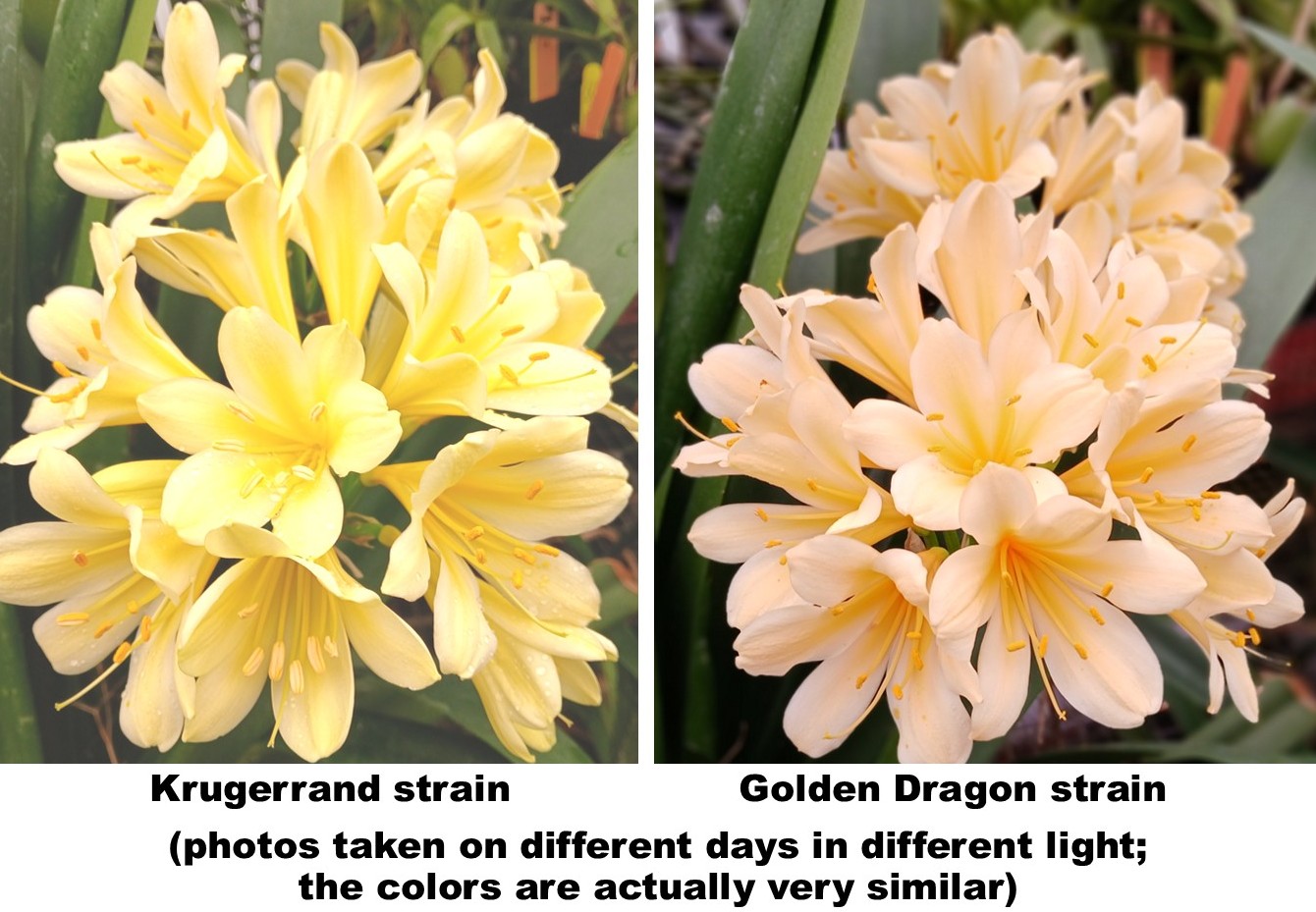
+1 973-495-4863
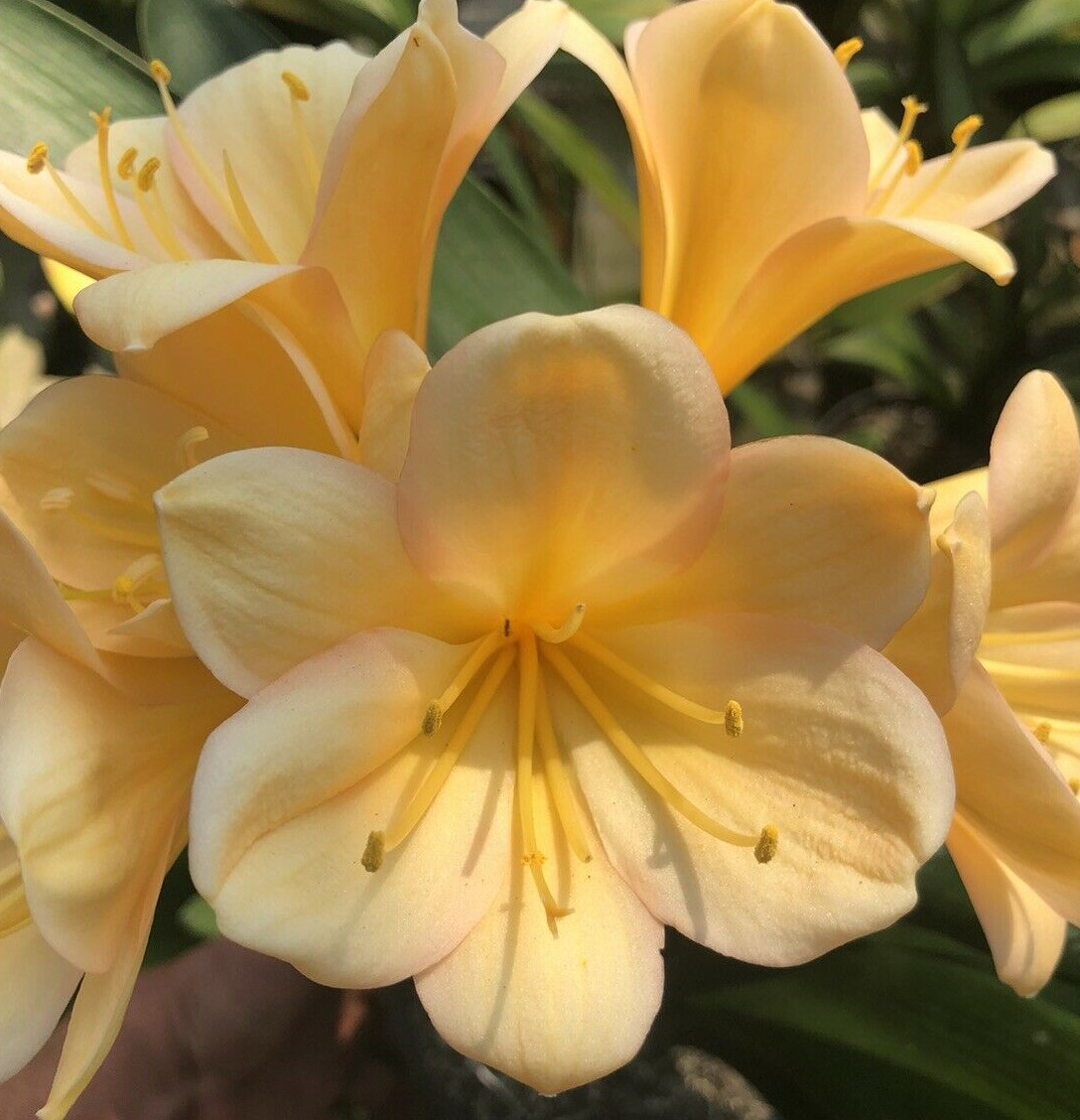
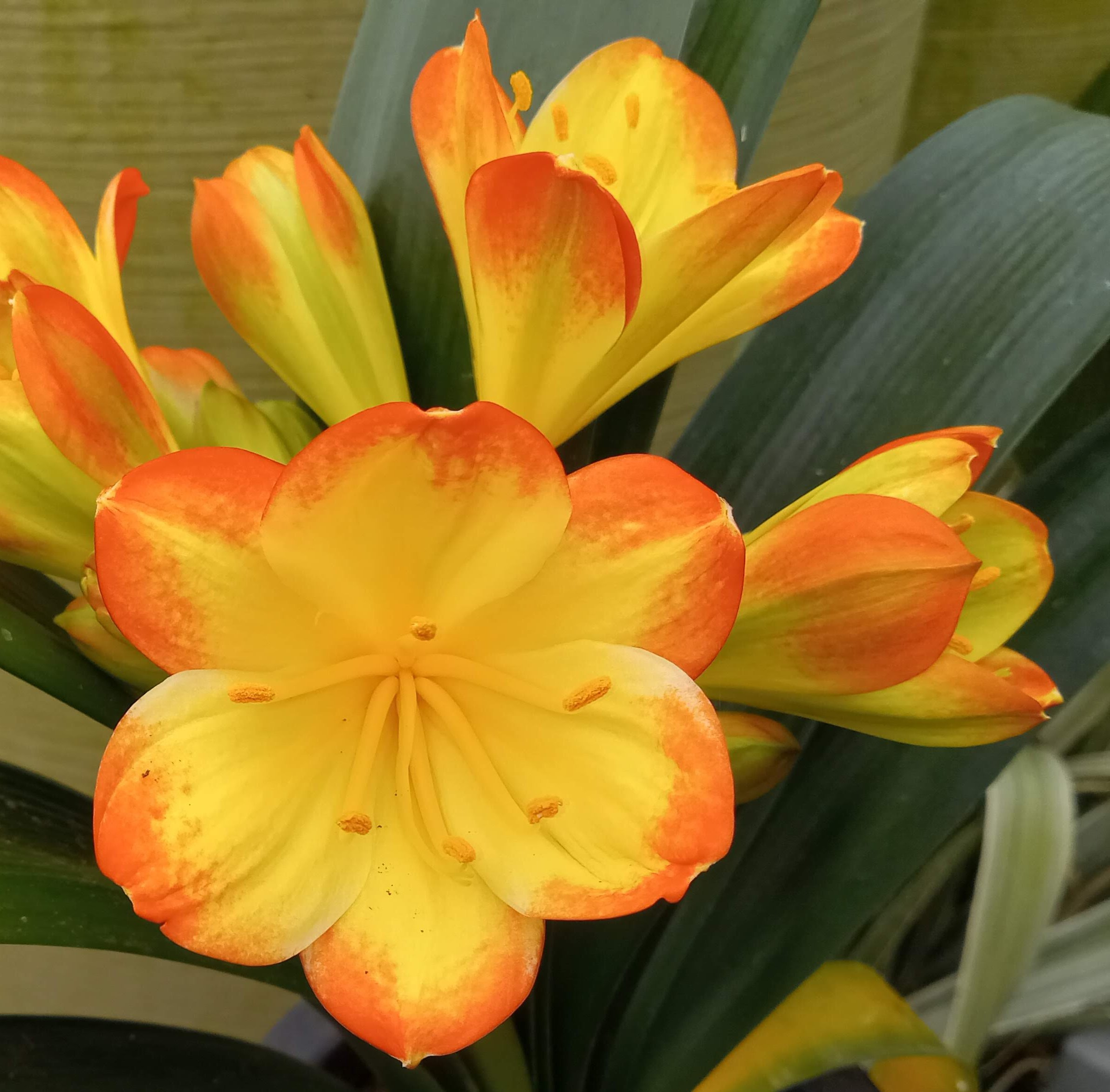
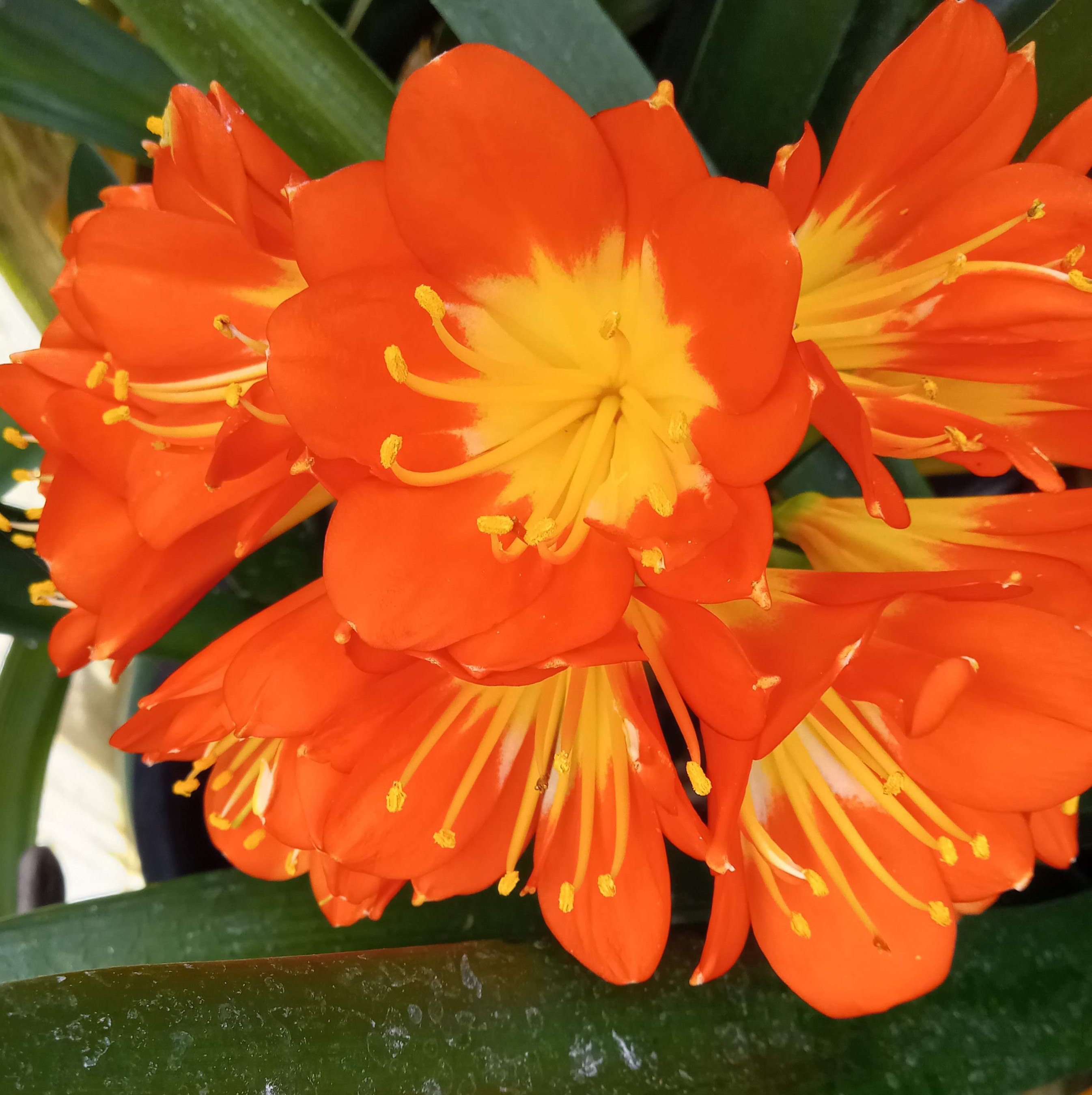
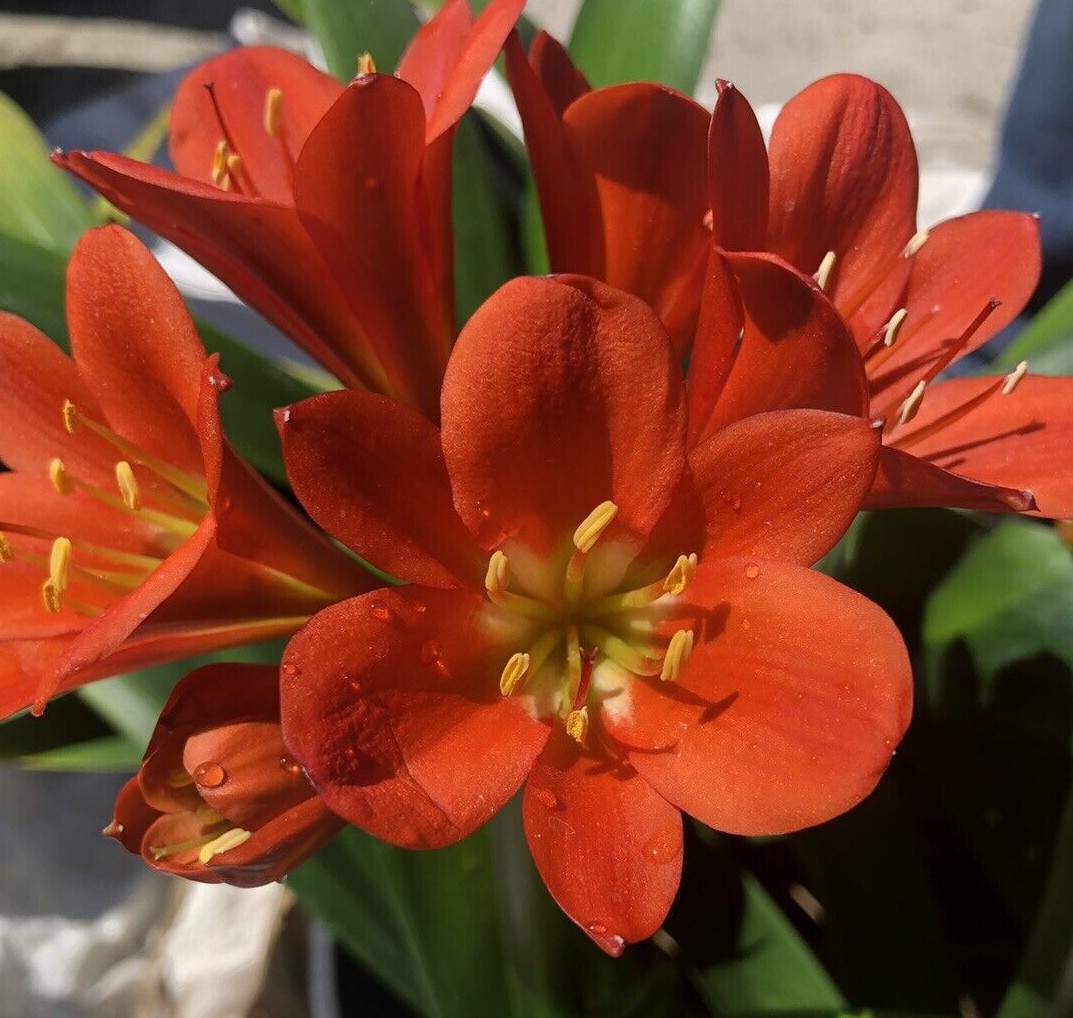
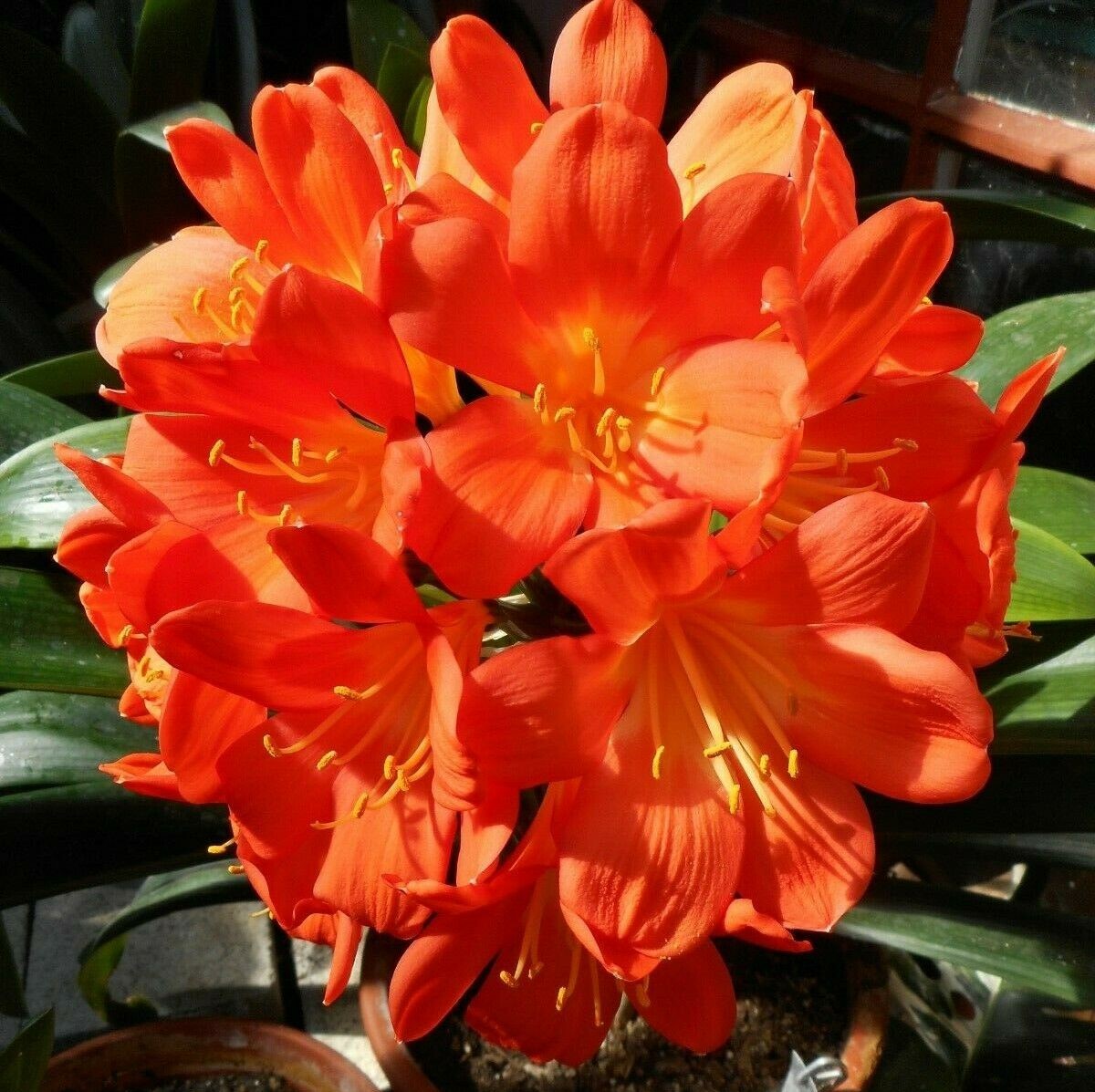
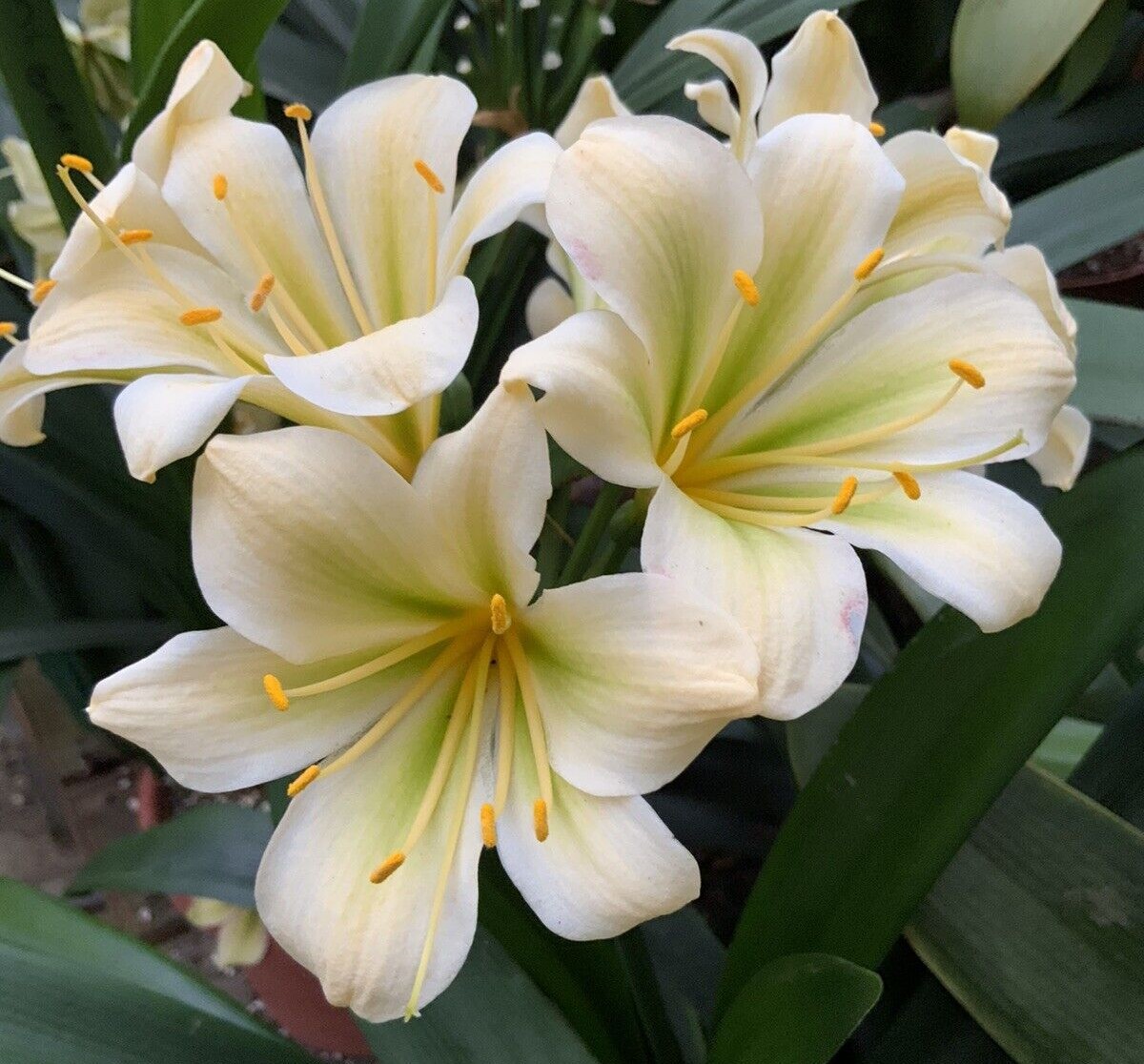
Clivia miniata is an easy house plant, and often grown alongside orchids. It does well in low light. To induce flowering:
It should be kept dry (= NO watering) from mid November till the inflorescence is clear of the foliage.
Ideally it should be kept in a cooler location simultaneously with the dry spell.
After flowering, it can go outside into medium to deep shade once the last frost date has passed.
I propagate Clivia miniata in three categories:
Standard orange. Here I currently offer both traditional (fairly large) and dwarf plants.
Non-standard color forms. Some of these have orange flowers, but are genetically 50% yellow, etc.
With variegated foliage (both orange & yellow flowers).
Prior to the Covid-19 epidemic, we could get broad leaf variegated plants from a source in China. That grower no longer responds to communications, so we have had to look elsewhere. I have re-acquired 3 plants from the original Chinese imports; these will be bred whenever they bloom.
I have collected a number of non-standard plants for breeding purposes (as well as seedlings, when available). If you have off-sets from unusual Clivias (green, red, near white, variegated, etc.), I might be interested in buying for use in further breeding; please send photos of the flower, plant & your price to fairorchids@aol.com.
Additionally, I import seed from Utopia Clivias in South Africa each year. From the test shipment (August 2022) I reserved 11 plants; I bloomed 3 of these in April 2025 = 32 months from sowing. With President Trump's changes to tariffs (30% on South African shipments) & elimination of the small shipment duty exemption, my 2025 seed shipment was subject to $430 in unexpected duty.
Please click on the link in next column to download the current Clivia price list (dated 062325, superceeding any prior editions).
Seed sowing tips:
Do not sow Clivia seeds in flats or trays. The initial root can run 6-10" sideways, and you will never get it into a small pot. I use 3" pots for each 6-8 seeds, and place a piece of shade cloth in the bottom of the pot to prevent the roots from growing through the drain holes. Photo below shows what happens if you do not block the drain holes (these seedlings required 4" extra deep pots).
I place the seed pots in one of my closed orchid seedling bins (with water in the bottom). This way I only need to water the pots a few times during the germination period.
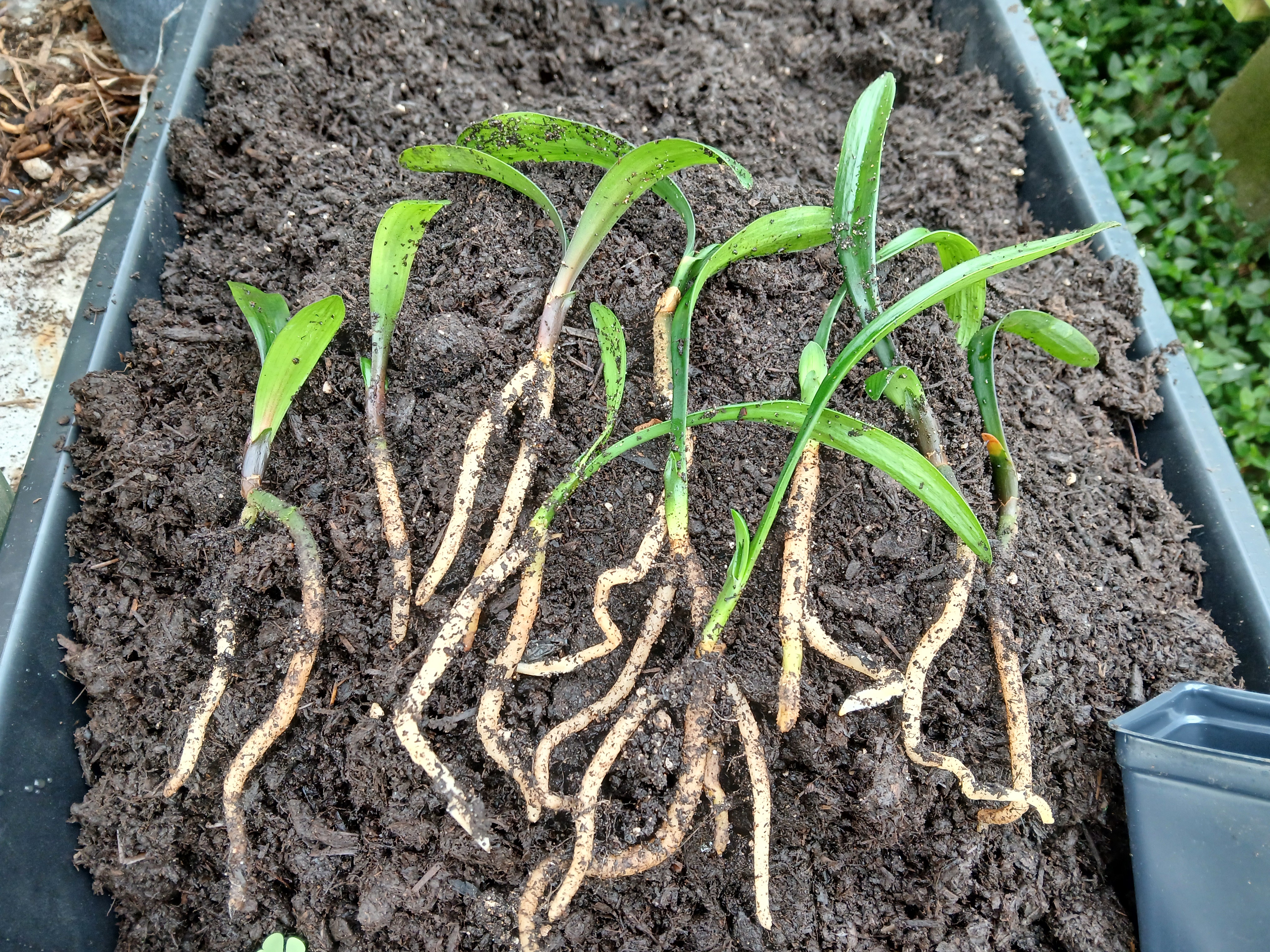

East Coast Clivia Show??
The North American Clivia Society (NACS) would like to organize a Clivia show on the East coast. Ideally such an event should take place the weekend following the Phila-delphia Flower Show. If you know of a suitable venue between Washington DC and NYC, or might be interested in assisting with such an event, please let me know.
Clivia genetics have been well documented by Harold Koopowitz. However, as is common with seed grown plants, you do not always get what you want.
This year I bloomed the first two seedlings from a Chinese pastel (standard x multi-tepal) pairing. One was orange with only 6 tepals; the other was yellow and had a single multi-tepal flower.
One pleasant surprise was FO #024, purchased on Ebay based on a so-so photo. Once I got this plant established, in the first blooming each flower had either 10 or 12 tepals; much better than what I had expected. This plant has produced offsets, which will be available in late 2025 (it has 4 pups, of which two are spoken for).
Around the same time I bloomed the first plant from a group of 2-tone seedlings (from a selfing). Original photo of mother plant looks like it might be Conway's Ramona, which I know was in the breeder's collection. I kept this seedling (as FO #063) and selfed it; it produced about 50 seeds, which are currently germinating (spring 2025).
More recently I acquired a group of (narrow leaf yellow x orange Daruma) seedlings, as their genetics might be useful. The leaf width varies, but the first several to bloom have all had strong green throat color (see FO #016.1 to the right (this photo did not capture the green well).
Currently I produce 2-400 seedlings each year. As a general rule, I do not release seedlings for sale till they have at least 3-4 leaves; at that stage they are in individual 2.1/2" square pots. When they outgrow their first pot, they move into a round Quart pot; they stay in that pot till first bloom. Cultural notes on Clivia
I do not sell on Ebay. Seedlings and divisions are sold exclusively through this web site and when I participate in regional orchid shows.
Clivia Price List, June 23 2025 covers larger seedlings from previous years & divisions.
Master Log of Seed Started (for reference only, some items are sold out and the higher numbers have not been released for sale yet).
From the 2025 blooming season, I have a good volume of seed coming along. Most are selfings, but we are also looking to repeat X025 (#008 x Kyle's Yellow/Green); the eventual seedlings will be released in 2027.
South African seedlings from 2023 will be posted as soon as I can find the time to inventory the crop. 2024 seedlings will start to appear towards the end of 2025 (photo below shows seedlings at 10 months from sowing. Back row plants are in 4" pots as I could not force the roots into the 2.1/2" pot normally used at this stage.
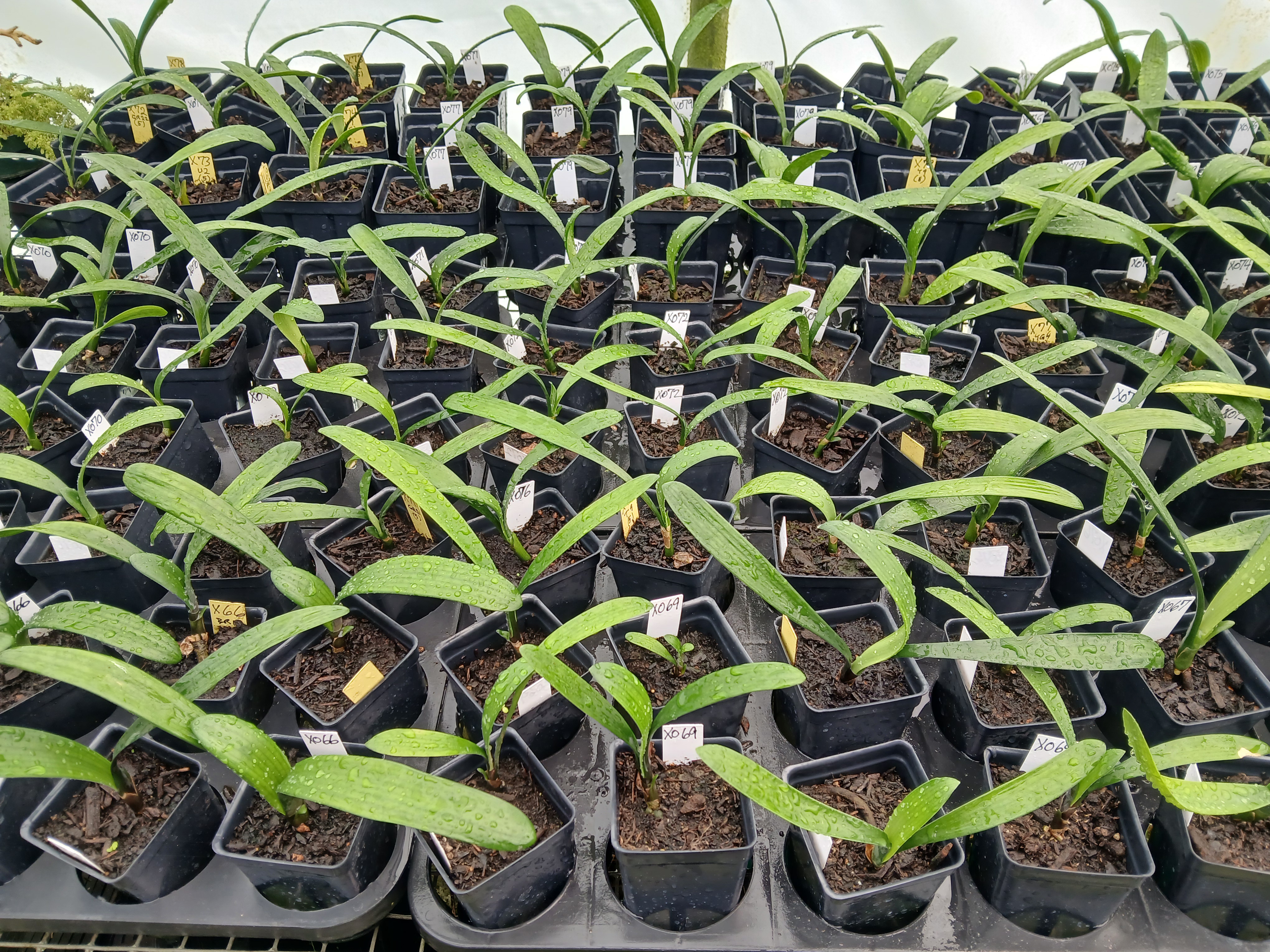
Only one of my Chinese variegated plants bloomed during the 2025 season, but it produced good quality flowers. It is now carrying berries with variegated skin. Half are from a selfing; the other half were pollinated with yellow pollen, flowers will be orange, but plants will be genetically 50% yellow.
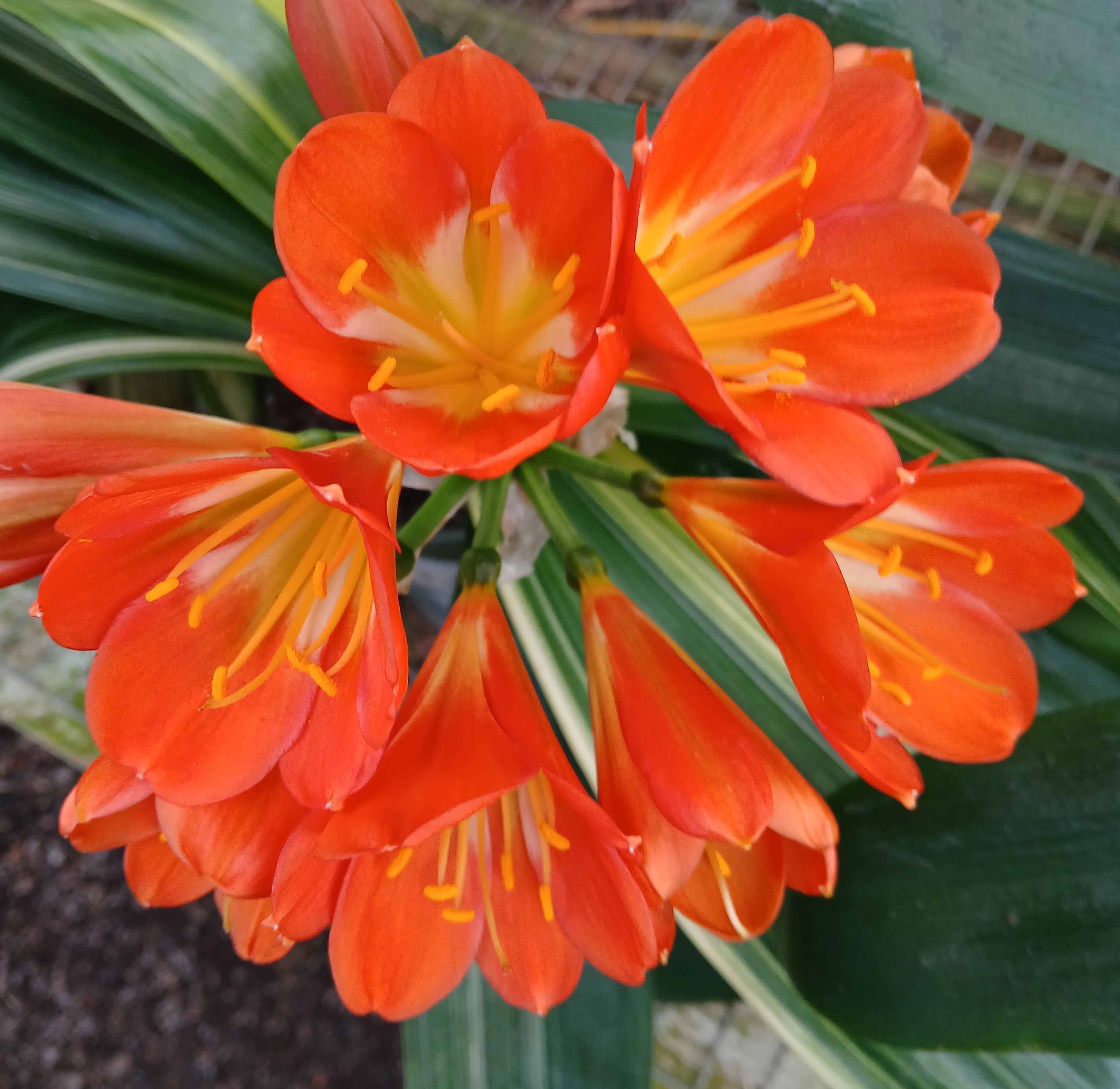
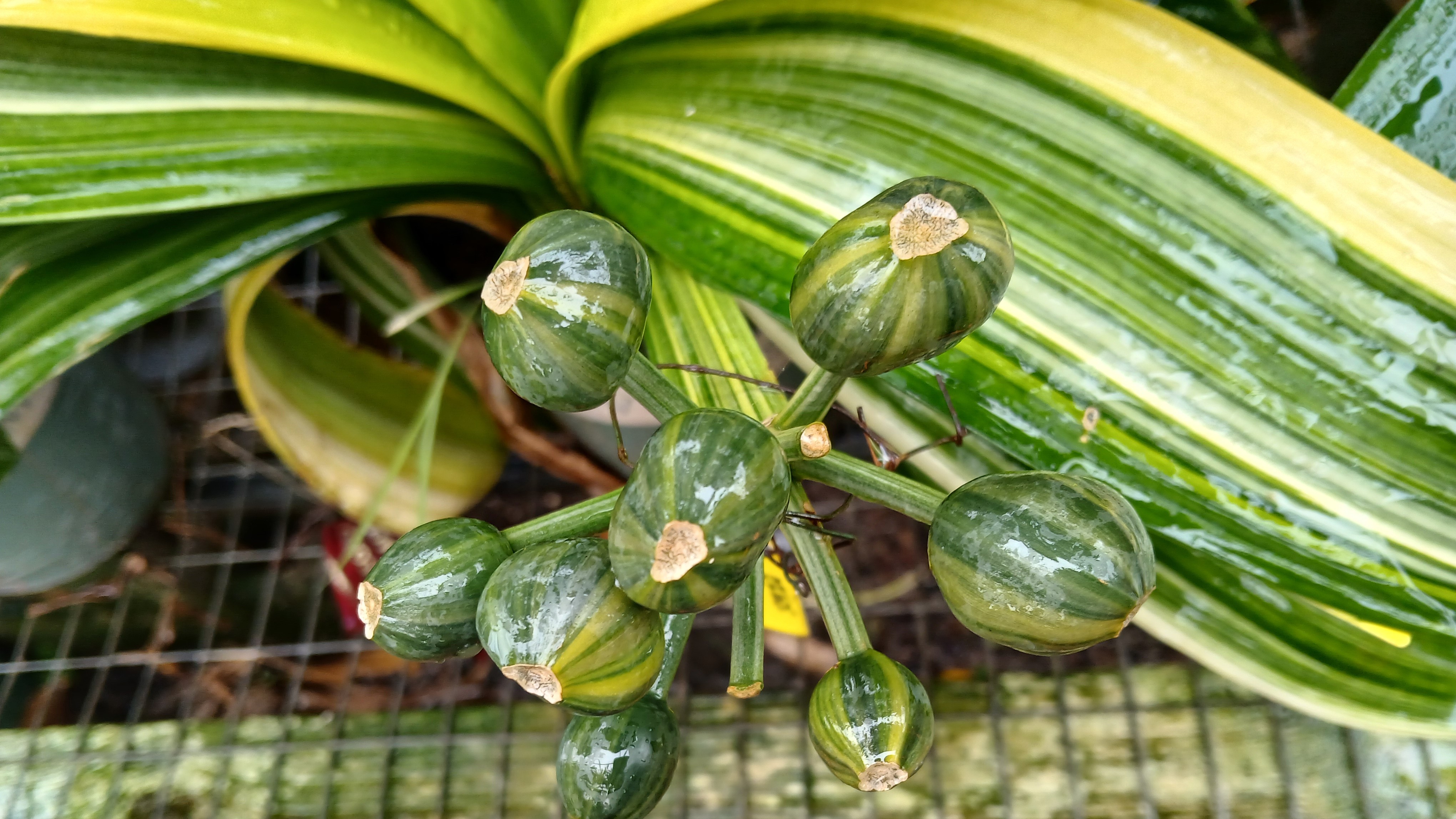
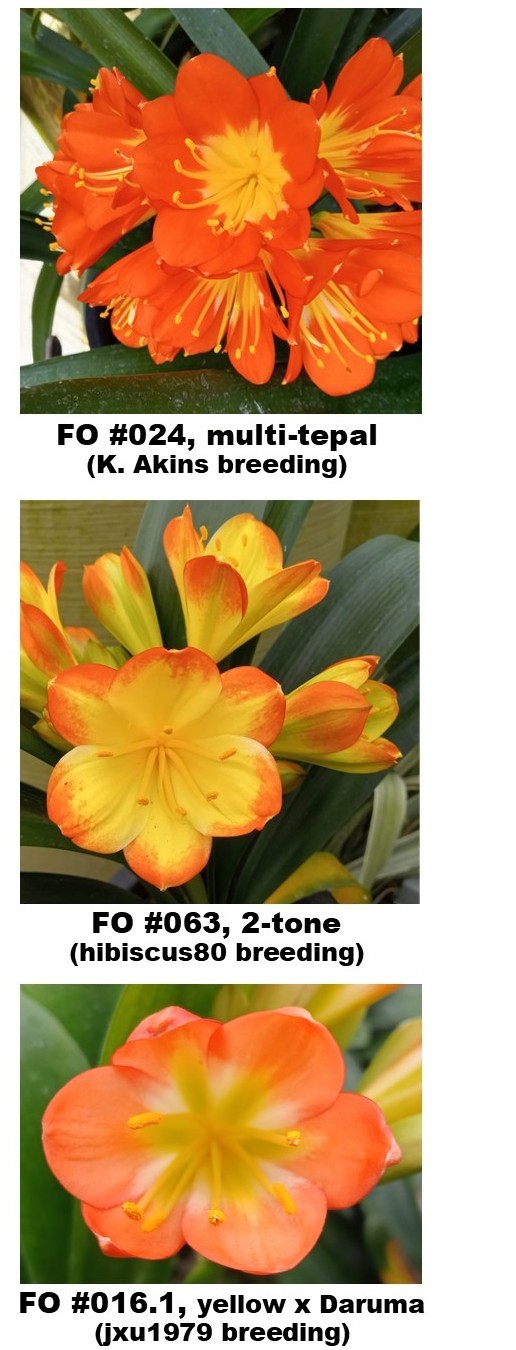
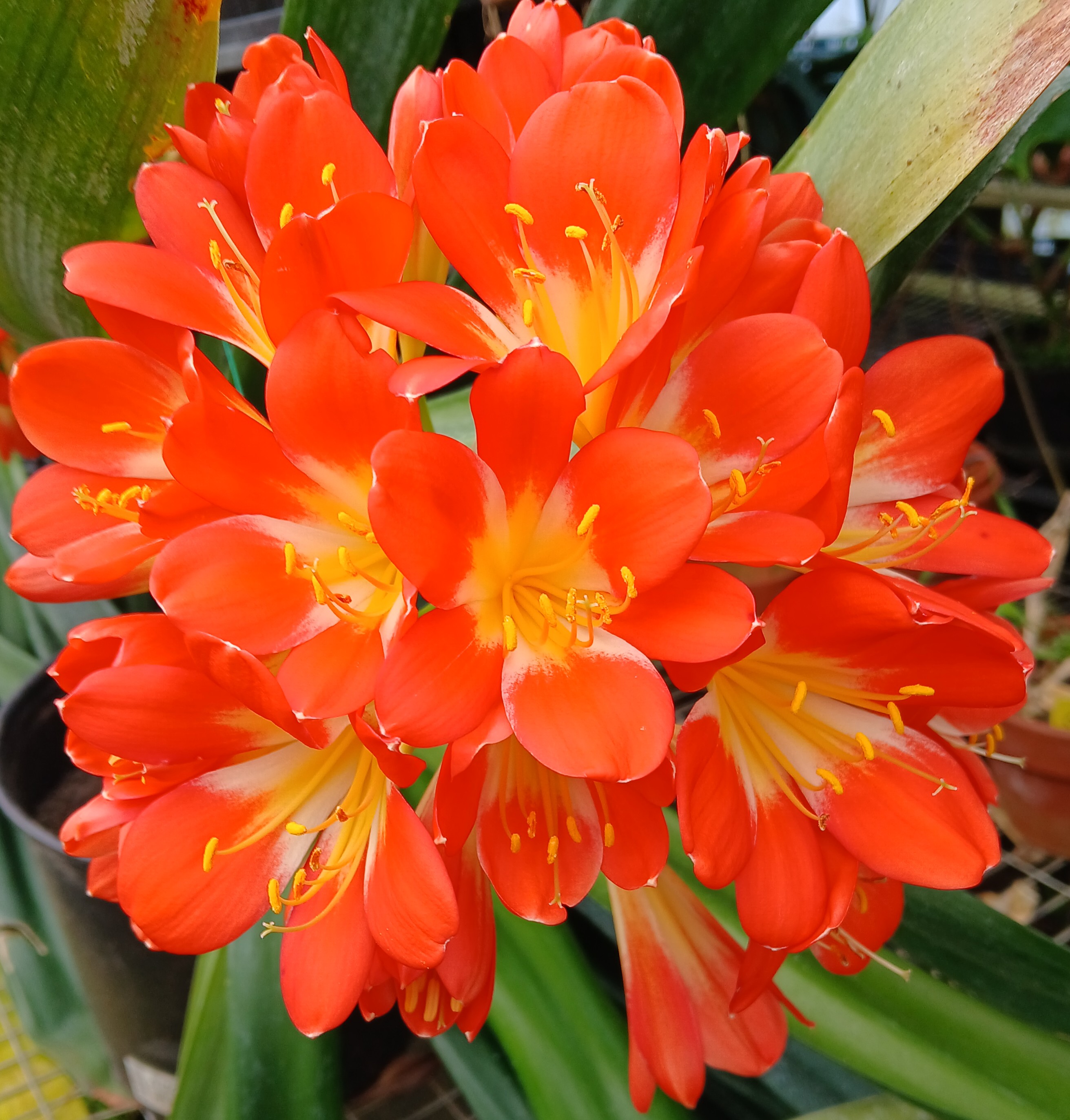
In February 2025 (10°F weather) I rescued 15+ mature multi-stem plants from a collection that would otherwise have been discarded, when the grower went to an assisted living facility. These plants were reportedly bred by Al Manda, and used at the Frick Collection in NYC when in bloom.
The flowers are not quite as full as current breeding lines (see above), but plants are strong with large flower heads and an occasional multi-tepal flower. They were growing haphazardly under orchid benches, so the foliage is not well oriented at the moment.
From this group I have identified two with notable flowers, LZ7 is sort of a 2-tone, with a near white throat, while LZ10 has signi-ficant green in the throat (it doesn't show well in photos). The other p lants have not been individually evaluated yet. Single stem divisions:
LZ7 divisions : $45 NBS or $60 BS LZ10 divisions : $35 NBS or $48 BS Non-evaluated: $30 NBS or $40 BS
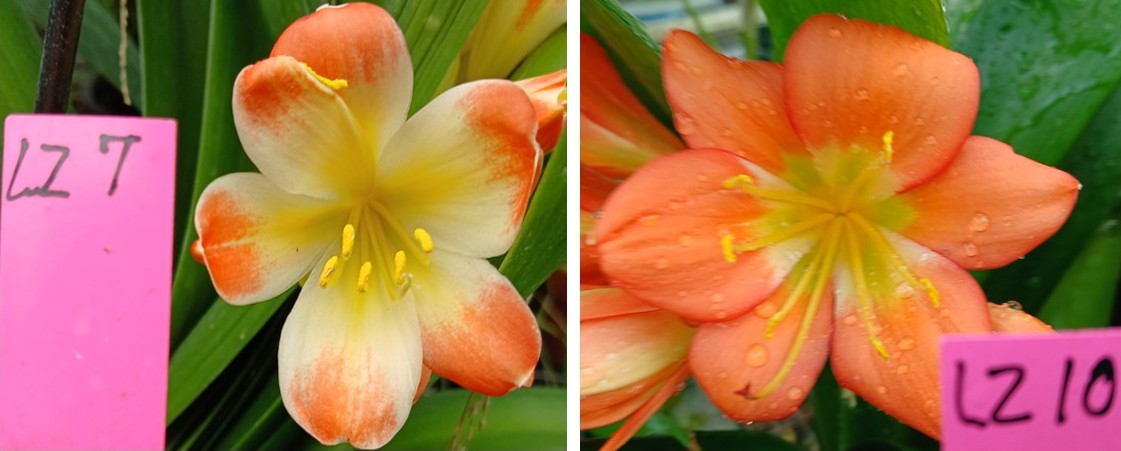
From the same collection I obtained six yellow Clivias. Two bloomed orange, but the other 4 are legit, two each Krugerrand and Golden Dragon strains. These four plants currently carry seed; they only have a few off-sets, which will be separated soon.
